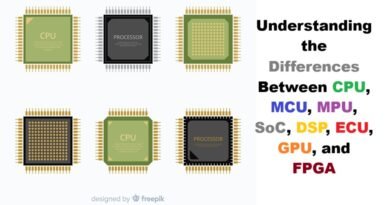What is Signal-to-Noise Ratio and How to Calculate It?
Introduction
Signal-to-Noise Ratio (SNR) is a fundamental concept in fields such as electronics, telecommunications, and audio engineering. It measures the ratio of the desired signal to the background noise present in a system. SNR is critical for evaluating the quality and clarity of a signal.
A higher SNR indicates a stronger signal relative to the noise, resulting in better performance. For example:
- In audio systems, a high SNR ensures clear sound reproduction.
- In telecommunications, it determines the quality of voice and data transmission.
SNR is expressed in decibels (dB) on a logarithmic scale, offering a universal way to compare and evaluate signal quality across applications.
What is Signal-to-Noise Ratio?
SNR quantifies the strength of a signal compared to unwanted noise:
- Higher SNR: Stronger and more reliable signal.
- Lower SNR: Weaker signal prone to interference or distortion.
In telecommunications, electronics, and beyond, improving SNR boosts overall performance, often achieved by:
- Reducing background noise.
- Amplifying the desired signal.
- Employing advanced signal-processing techniques.
Why is SNR Important?
SNR impacts:
- Audio/Video Quality: Clear signals ensure better sound and image reproduction.
- Wireless Communication: Higher SNR improves signal transmission quality and minimizes interference.
- Astronomy & Medical Imaging: Essential for detecting faint celestial signals or producing accurate diagnostic images.
Understanding SNR with Examples
If a wireless device receives a signal of -75 dBm and the noise floor is -90 dBm, the SNR is:
SNR = Signal Strength – Noise Floor = -75 – (-90) = 15 dB.
Signal quality increases as the gap between the signal and noise floor widens.
SNR Categories for Wireless Networks
- Below 5-10 dB: Insufficient for connection.
- 10-15 dB: Unreliable connection.
- 15-25 dB: Poor connectivity.
- 25-40 dB: Good connection.
- 41+ dB: Excellent connection.
Calculating Signal-to-Noise Ratio
The formula for SNR is:
SNR (dB) = 10 * log10(Signal Power / Noise Power).
Steps:
- Measure Signal Power: Use a power meter to determine signal power.
- Measure Noise Power: Record the background noise level.
- Calculate SNR: Plug values into the formula.
SNR and Channel Capacity
SNR also influences the channel capacity—the maximum data rate a communication system can handle without errors. This is given by the Shannon Capacity Formula:
C = B * log2(1 + SNR),
where:
- C is the channel capacity (bits/sec).
- B is the bandwidth (Hz).
Higher SNR allows for greater data rates, improving communication performance.
Optimizing SNR
To improve SNR:
- Increase signal power.
- Use noise-canceling techniques.
- Employ error correction codes.
- Optimize modulation schemes.
Conclusion
Signal-to-Noise Ratio (SNR) is vital for ensuring signal quality across various fields. By understanding and optimizing SNR, we can enhance performance in audio systems, wireless communication, medical imaging, and more.
A higher SNR not only improves clarity but also paves the way for more efficient and reliable systems.








